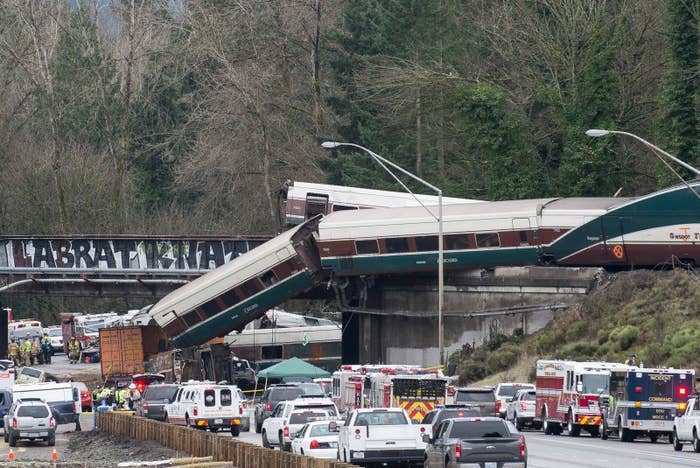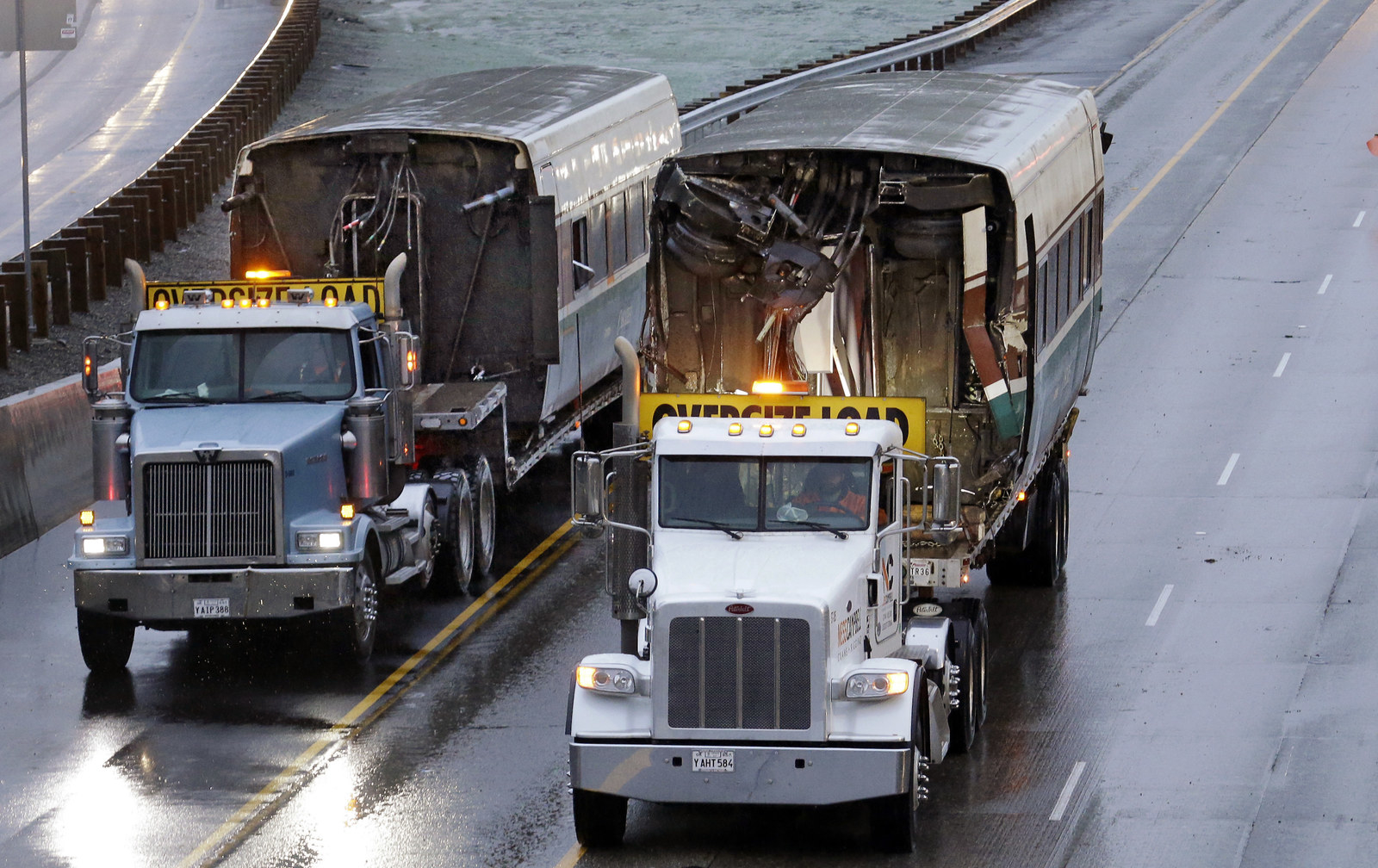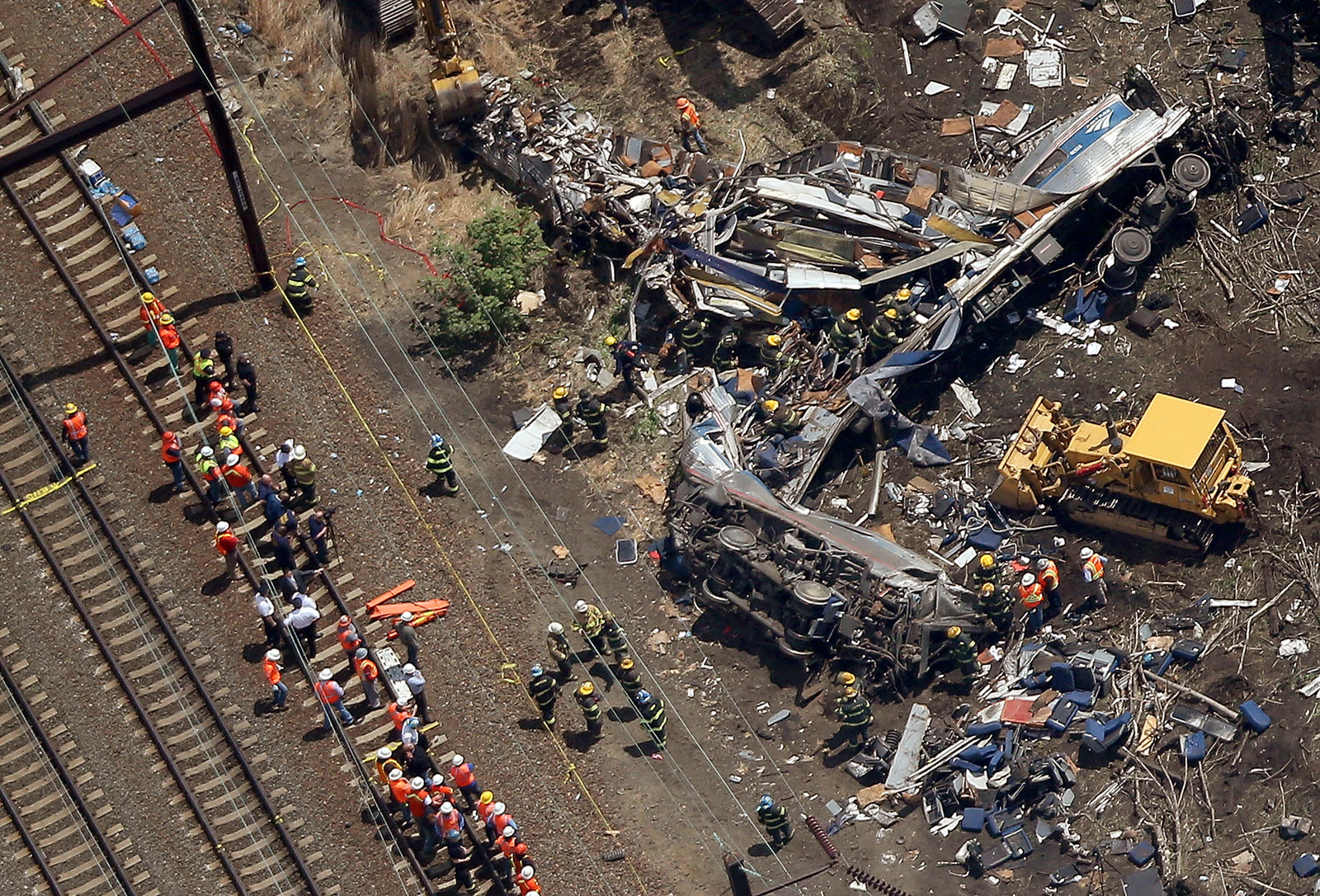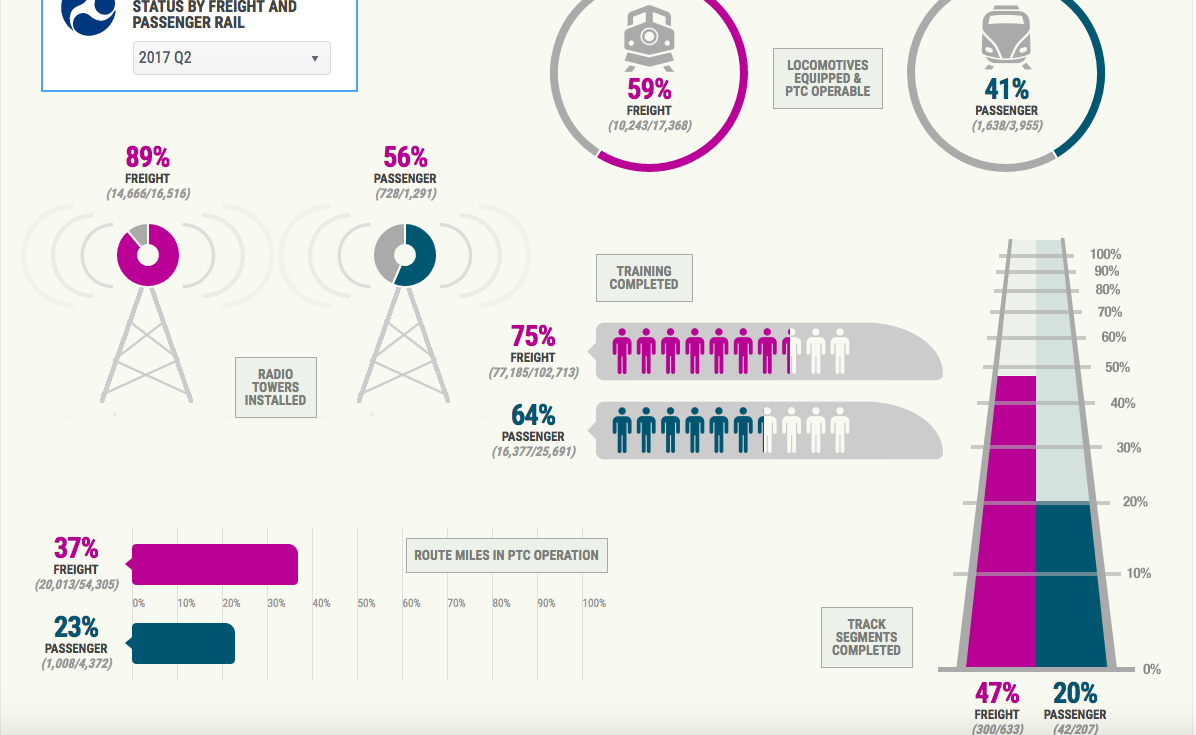
The train that veered off its tracks in Washington on Monday, killing at least three people, had safety technology installed that prevents accidents, but it had not yet been cleared for use, an official said.
Known as Positive Train Control, or PTC, the system uses computers, wireless radios, and GPS to monitor and automatically slow trains down when the system senses they are going too fast or might crash. It was designed to compensate for human error, such as an operator falling asleep or failing to notice a warning sign.
The National Transportation Safety Board (NTSB) is expected to spend months determining what exactly caused the Washington derailment, from the engineer's cellphone records and camera footage, but federal investigators said the Amtrak Cascades passenger train was traveling 80 mph through a 30 mph bend on its way to Portland before it derailed and plunged into traffic below on an interstate near Tacoma. In addition to the dead, more than 70 people were taken to hospitals.

"Had there been a diligent effort to ensure Positive Train Control was in place, this accident probably wouldn't have happened," said Keith Millhouse, a rail safety expert and former board chairman of Southern California's Metrolink commuter rail system. "It's reckless not to have this safety technology in 2017."
The rail company had plans to go live with the new technology, but was able to delay its activation after a federal extension was approved, NTSB officials said Tuesday.
"There was a recommendation, a mandate, to install [PTC]," Bella Dinh-Zarr, an NTSB spokeswoman, told reporters. "Unfortunately, the deadline was the end of 2015. For some reason, Congress extended that deadline to train companies to the end of 2018."
Congress ordered that all US rail lines install PTC by 2015 after 25 people were killed when two trains collided outside Los Angeles in 2008. Investigators said the passenger train engineer had been texting just moments before his commuter train skipped a red light and collided with a Union Pacific freight train.
But railroad companies pushed back, calling the timeline unrealistic due to high costs and technology hurdles, so Congress gave them until the end of 2018 and, if necessary, 2020.
Officials from the Washington Department of Transportation and Sound Transit, which owns the track corridor, explained that the technology had been installed but was not ready to use.
"The equipment on the trains and tracks is not integrated with the control center equipment yet and testing and certification still need to occur as well," Geoff Patrick, a Sound Transit spokesman, told BuzzFeed News.
On Dec. 21, Washington Department of Transportation announced that the Amtrak Cascades passenger rail service will not return to the new route until positive train control (PTC) technology is activated.
"This is not because WSDOT has any reason to believe the tracks are unsafe – the tracks were thoroughly inspected and tested," the agency explained in a statement. "The decision was made to be sensitive both to the people involved in the tragic derailment and ongoing passengers."
The deadly derailment bears similarities to the massive Amtrak crash in Philadelphia in 2015, when an engineer, without the oversight of PTC, flew around a curb at 106 mph, sending passenger cars off the rails and killing eight people.

Across the US, the safety technology is currently active on just 23% of all passenger rail lines and 37% of freight routes.
Millhouse said rail companies should also install inward-facing cameras that monitor the actions and behavior of engineers.
"They act as a deterrent to bad conduct," he said. "They capture cell phone use, show if someone is not paying attention, or if they've nodded off. They provide forensic evidence of what the engineer was doing at the time of the accident."
But Amtrak has made progress, installing PTC in 49% of its trains and 67% of its tracks, according to the Federal Railroad Administration.

Complicating the rollout is the sheer size and price tag of the effort. Costing up to $22.5 billion over 20 years, rail companies need to root cell towers, receivers, and program software specific to certain trains, which the Association of American Railroads calls "an unprecedented challenge on a scale that has never been attempted on railroads anywhere in the world."
Millhouse acknowledged the costs involved but said there was no alternative.
"It is a very complicated technology, it's expensive, and it takes time to implement, but without it, it's like using one of those old brick cell phones in the age of an iPhone," Millhouse said. "It doesn't make sense."
Earlier this month, local officials said they had safety concerns about the speeds and crossing of the new train route, which now cuts through a few communities rather than winding along Puget Sound coast. In 2013, the city of Lakewood sued to stop construction, fearing the number of track crossings could lead to a collision involving cars or pedestrians. The suit was dismissed in 2014.
Lakewood Mayor Don Anderson has repeatedly blasted Washington Department of Transportation for not fully enacting safety enhancements. At a Dec. 4 about the new line, he voiced his concerns about the train cutting through traffic in the city.
“It’s virtually inevitable that someone is going to get killed that wouldn’t be killed otherwise," Anderson said. "This is unacceptable."
"Come back when there is that accident, and try to justify not putting in those safety enhancements...It's a great project for bureaucrats terrible for our community. When someone is killed I want someone from WashDOT rail back here."
In DuPont, where the crash occurred, Mayor Mike Courts said officials had been training for train derailments for several months given that a fast-moving train would now be running through his town 14 times per day.
"We realized we should be prepared for this because it endangers our residents," he said. "We should learn to deal with these accidents because they happen when you least expect it."
While he was troubled about another aspect of the new route — trains intersecting with roadways — he said Tuesday that the crash has intensified his concerns that rail officials cut corners with safety.
"If you have the technologies to prevent these crashes, why aren't you using those?" he said. "They are going to have to work really hard to sell that line to people in my town after it jumped the track and killed people on its first day."
